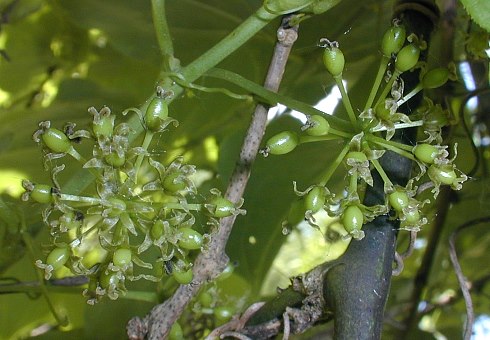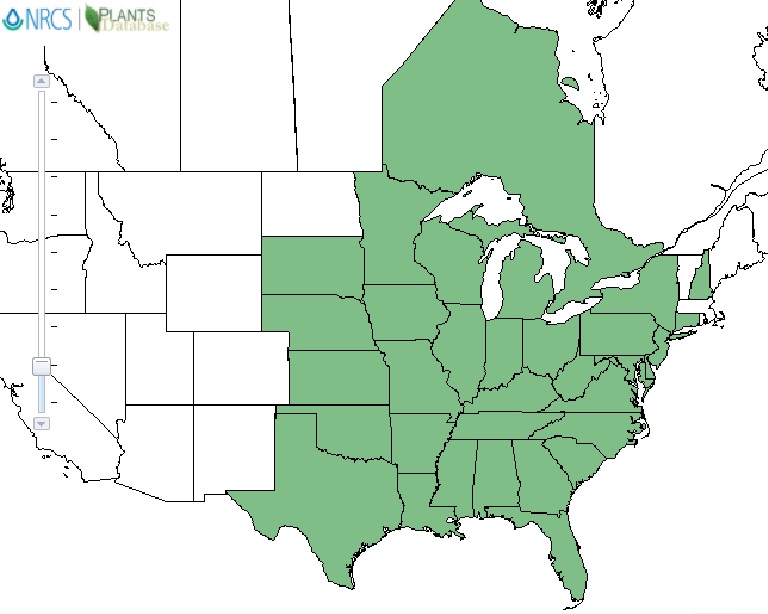Difference between revisions of "Smilax hispida"
(→Distribution) |
|||
| Line 27: | Line 27: | ||
<!-- Basic life history facts such as annual/perrenial, monoecious/dioecious, root morphology, seed type, etc. --> | <!-- Basic life history facts such as annual/perrenial, monoecious/dioecious, root morphology, seed type, etc. --> | ||
==Distribution== | ==Distribution== | ||
| + | This species ranges from Connecticut, New York, Minnesota, and Nebraska south to Texas and southern Florida.<ref name=Weakley 2015"/> | ||
| + | |||
==Ecology== | ==Ecology== | ||
===Habitat=== <!--Natural communities, human disturbed habitats, topography, hydrology, soils, light, fire regime requirements for removal of competition, etc.--> | ===Habitat=== <!--Natural communities, human disturbed habitats, topography, hydrology, soils, light, fire regime requirements for removal of competition, etc.--> | ||
Revision as of 20:44, 23 January 2018
| Smilax hispida | |
|---|---|

| |
| Photo by John Hilty hosted at IllinoisWildflowers.info | |
| Scientific classification | |
| Kingdom: | Plantae |
| Division: | Magnoliophyta - Flowering plants |
| Class: | Liliopsida - Moncots |
| Order: | Liliales |
| Family: | Smilacaceae |
| Genus: | Smilax |
| Species: | S. hispida |
| Binomial name | |
| Smilax hispida Rafinesque | |

| |
Natural range of Smilax hispida from Weakley. {ref}Weakley, Alan S. 2015. Flora of the Southern and Mid-Atlantic States: Working Draft of 21 May 2015. University of North Carolina, Chapel Hill, North Carolina. 1320 pp.
{/ref}
| |
Common Name: bristly greenbriar[1]
Contents
Taxonomic Notes
Synonym: S. tamnoides[1] Varieties: S. hispida var. hispida; S. hispida var. australis[1]
Description
Distribution
This species ranges from Connecticut, New York, Minnesota, and Nebraska south to Texas and southern Florida.[2]
Ecology
Habitat
S. hispida is found in moist to wet forests.[1]